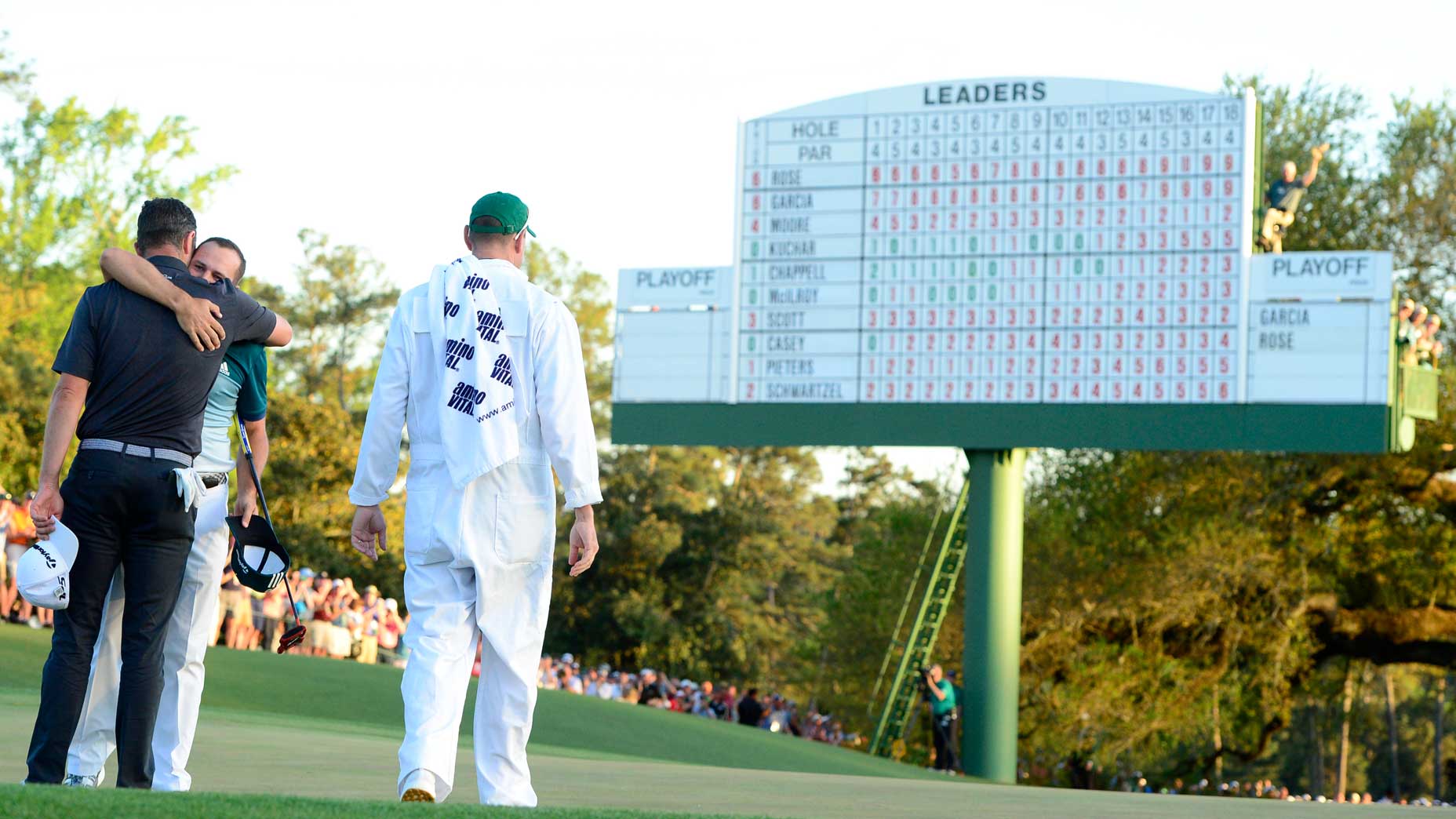
Sergio Garcia beat Justin Rose at the Masters’ last playoff in 2017.
Getty Images
They say the Masters doesn’t truly begin until the second nine on Sunday.
Well, here we are.
What was a potential two-horse race between Brooks Koepka and Jon Rahm has tightened pretty significantly in this final round with 13 golfers within five shots of the lead. As the leaders started the back nine, Rahm was at 10 under and held a two-stroke lead over Koepka and Jordan Spieth.
With the outcome anything but certain, a playoff for the green jacket remains a distinct possibility.
Keep reading below for everything you need to know about the Masters playoff format.
Masters playoff format and info
Sudden-death: Unlike the other three majors which have aggregate playoffs of between two and four holes (RIP to the U.S. Open 18-hole playoff), the Masters has a sudden-death playoff. That means a winner is determined as soon as one player has a lower score than another on a given hole.
Holes: The playoff will start on 18 and then, if needed, continue on to 10 and alternate until a winner has been determined. The playoff has started in a number of different places over the years, including 10 and 11, but has started at 18 since 2005 when Tiger Woods beat Chris DiMarco. No playoff has ever needed more than two holes.
Stats this week: On the two holes this week, Jon Rahm is even, Brooks Koepka is one-under, Jordan Spieth is even and Phil Mickelson is one-over.
History: The last playoff at the Masters was in 2017 when Sergio Garcia won his first major title over Justin Rose. The playoff was actually 18 holes (and even 36 holes for the first one between Gene Sarazen and Craig Wood in 1935) up until 1976. Since then, there have been 11 sudden-death playoffs. If there was a playoff Sunday, it would represent the second-largest drought since the format change of six years. The longest drought was from Nick Faldo’s 1990 triumph to Mike Weir’s win in 2003. Faldo is also the only player to win two playoffs.









